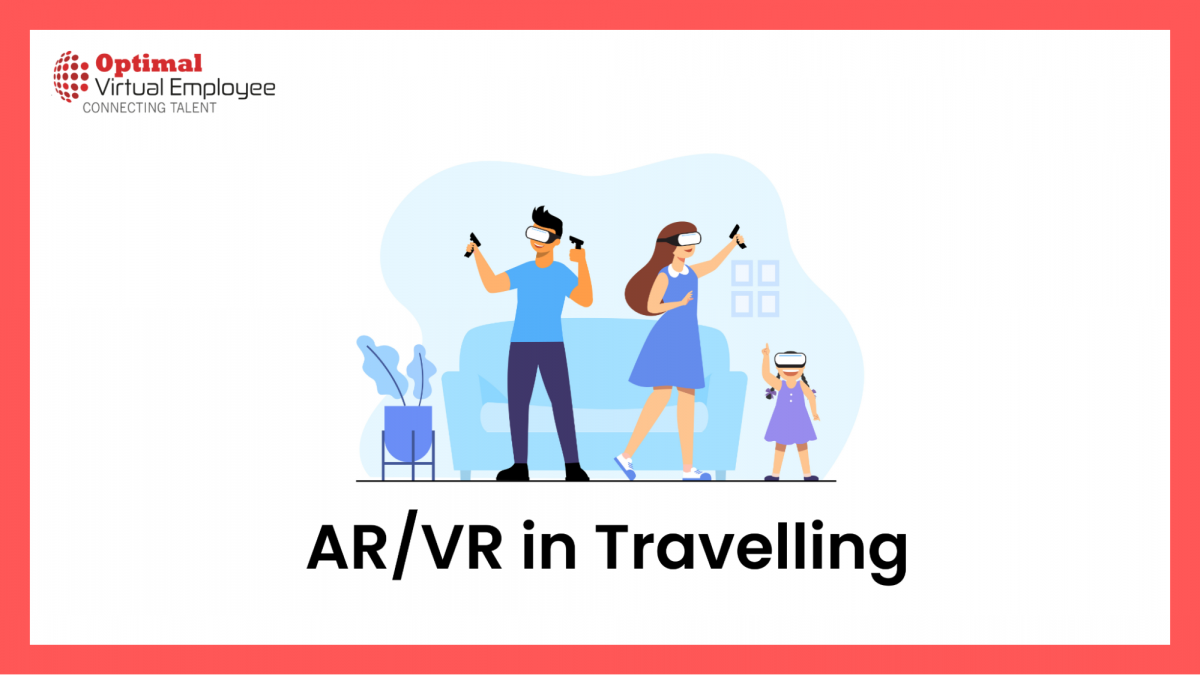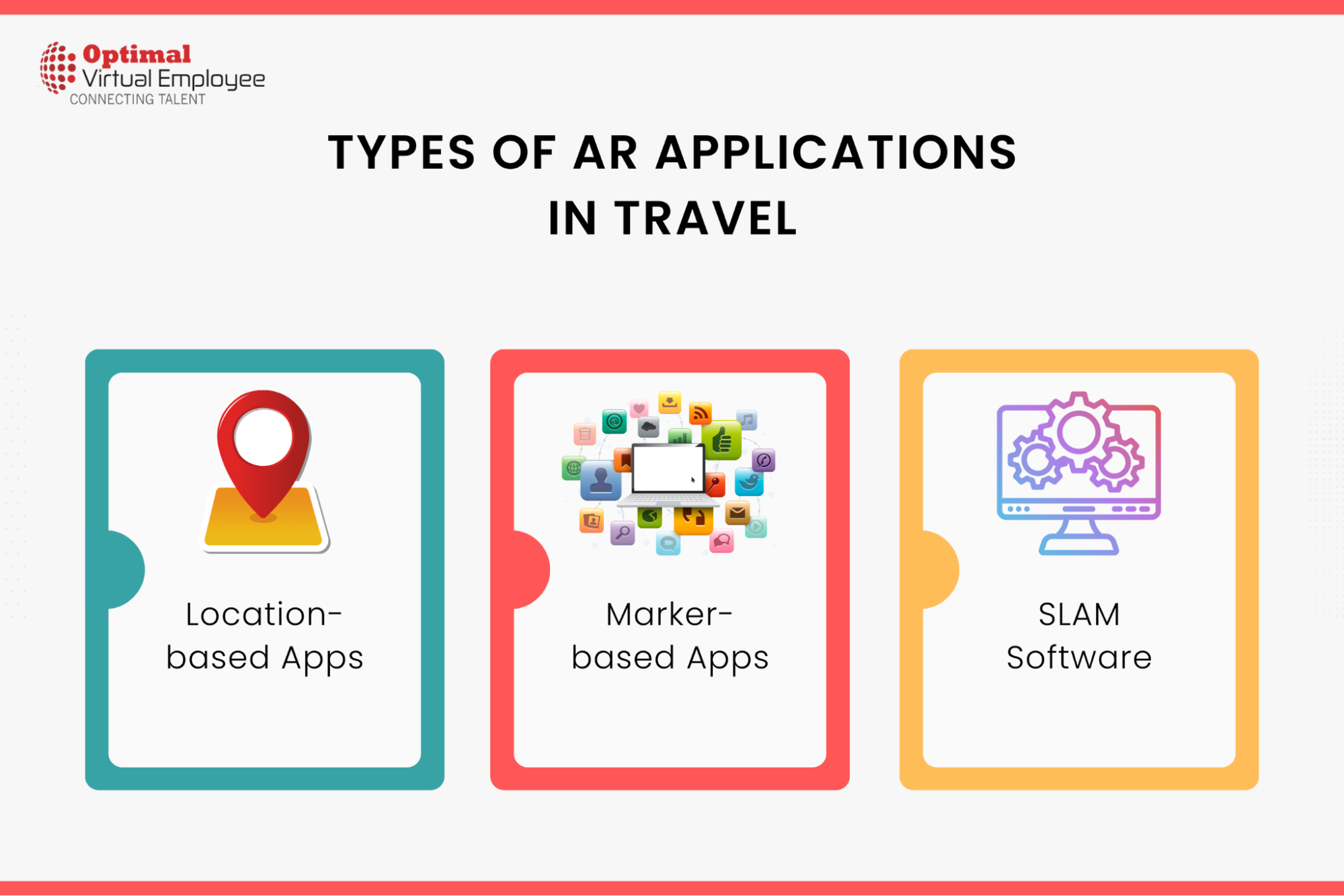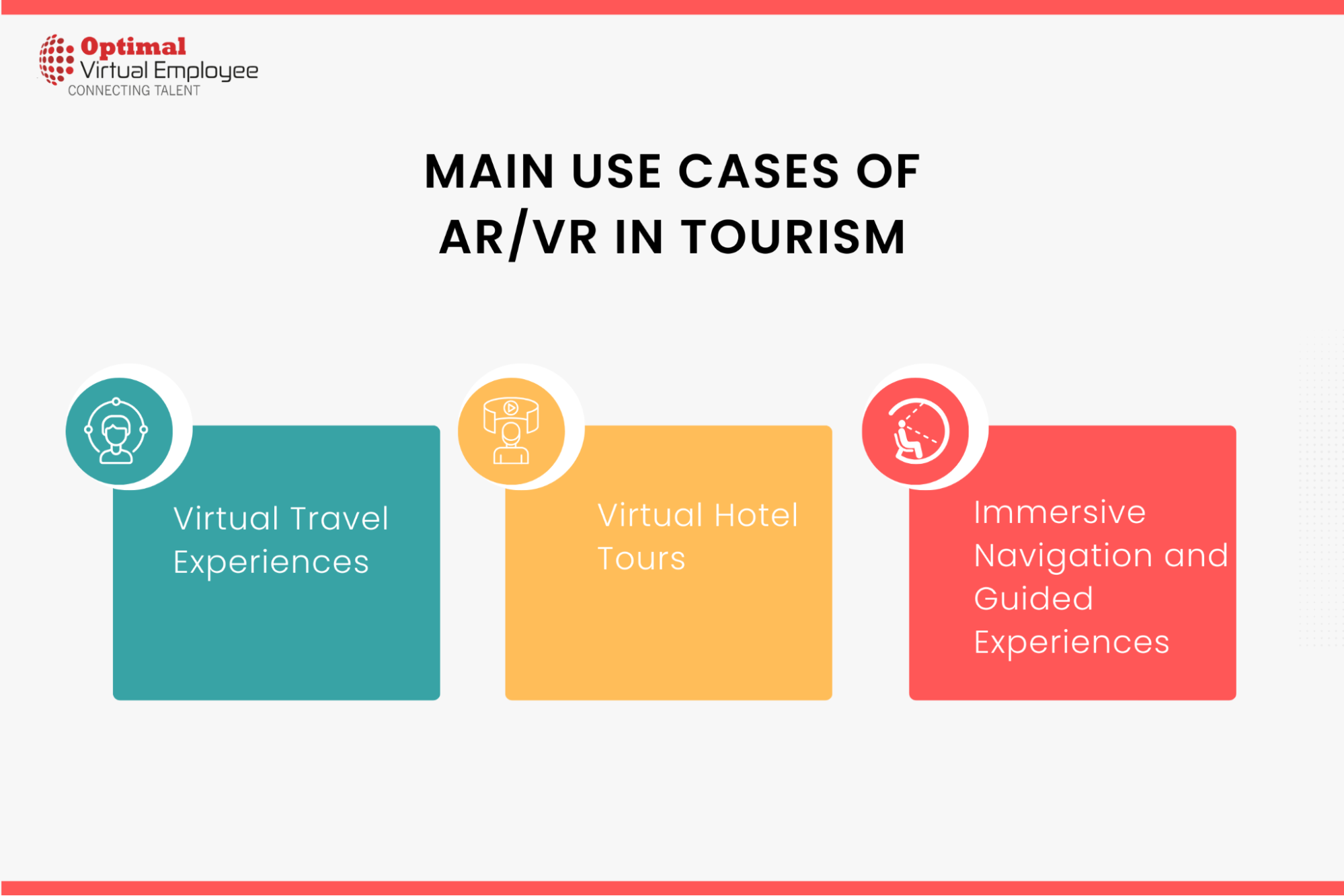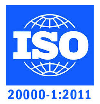As travel and tourism begin to rebound following the COVID-19 pandemic, industry leaders are exploring innovative ways to revive their businesses. One such avenue is the increasing application of Augmented Reality (AR) and Virtual Reality (VR) technologies. These digital tools are becoming vital components in crafting more immersive and engaging customer experiences, especially as the demand for travel services surges.
Continue reading to discover how AR and VR are positively influencing the tourism industry, their most impactful use cases, and the key elements driving their adoption in the sector.
Key Factors Driving AR and VR Adoption in Travel and Tourism
The escalating interest in AR and VR within the travel sector is fueled by several major factors. These include heightened awareness and understanding of AR and VR technologies, rapid advancements in the tech landscape, and an increase in consumer spending on such innovative solutions.
According to projections, the global market for AR and VR is set to witness robust growth, with an estimated worth of $304.4 million by 2023. This growth is, in part, propelled by the burgeoning travel and tourism industry, which contributed approximately $4.7 trillion to the global GDP in 2020, despite the pandemic’s challenges.
Regional Trends in AR and VR Tourism
North America currently dominates the market for tourism-related AR and VR applications. This is mainly due to substantial investments made by travel companies in cutting-edge AR and VR solutions. However, Asia-Pacific is expected to be the fastest-growing region in this context, primarily because of governmental initiatives aimed at stimulating and supporting the travel sector.
Promising Applications of AR and VR in Tourism
Among the most promising applications of AR and VR in travel and tourism are advanced travel booking systems, interactive games for travelers, intuitive navigation tools, and enhanced hospitality services.
In summary, as the travel industry awakens from the disruptions caused by the pandemic, AR and VR technologies offer exciting opportunities for growth and innovation, enhancing both the consumer experience and the sector’s economic impact.
What are the key challenges of AR/VR in tourism?
The COVID-19 pandemic had a devastating impact on the global tourism industry, leading many countries to shut their borders. A UN report revealed that tourist arrivals worldwide plummeted by 87% in January 2021 compared to the same month in the previous year.
Faced with this downturn, many travel businesses had to adapt their operational models. Investments in cutting-edge digital technologies took a back seat as the industry prioritized building safer environments to assure the health and safety of travelers.
However, even amid these challenges, AR (Augmented Reality) and VR (Virtual Reality) technologies have provided a silver lining, offering virtual travel experiences for those still hesitant to venture out.
How AR Enhances Travel Applications
One of the most significant advantages of AR-enabled travel apps is their ability to enrich and transform a user’s perception of their environment. They offer interactive and immersive experiences that engage multiple senses.
By 2023, it’s expected that AR users will number around 2.4 billion. Travel companies can leverage this growing user base to offer novel and unique experiences. For instance, consider enhancing a traditional sightseeing tour of London with an AR-powered museum visit, providing a one-of-a-kind experience for tourists.
Key Types of AR Applications in Travel
Currently, there are three main categories of AR applications that can elevate the travel experience:
Location-based Apps: These applications use GPS to identify a user’s location, making them ideal for creating AR-guided city tours, excursions, or navigational aids.
Marker-based Apps: Also known as recognition apps, these provide users with in-depth information about a specific object once it’s identified. For example, when viewing artworks in a museum, the app could display relevant details about each piece.
SLAM Software: Standing for Simultaneous Localization and Mapping, SLAM employs complex algorithms to identify objects in a user’s vicinity. It maps the physical world using feature points and enables real-time tracking and scene recognition. An example is Walt Disney Company’s patented “Virtual World Simulator,” which uses SLAM technology to create a digital overlay in a real-world theme park.
In summary, AR technology offers an exciting avenue for innovation in the travel sector, even in the challenging context of a post-pandemic world. Whether it’s enhancing traditional travel packages or offering virtual experiences, AR holds considerable promise for the future of tourism.
How does virtual reality travel enhance the user experience?
According to data from Statista, the Virtual Reality (VR) market is projected to exceed $12 billion by the year 2024.
The emergence of VR technologies has led to the creation of a diverse array of virtual travel experiences. These interactive 3D tours allow users to virtually explore a variety of destinations, offering a walkthrough experience from the comfort of their homes.
Travel agencies are leveraging VR as a powerful tool to stimulate bookings and drive revenue growth. For example, Amadeus is in the process of developing and testing its Virtual Reality Search and Booking Experience as an alternative booking method. VR also offers consumers the unique opportunity to “sample” a destination before committing to a physical trip.
Additionally, travel agencies have the option to offer fully VR-based trips, supplying customers with specialized equipment like VR helmets to enhance the immersive experience.
What are the main use cases of AR/VR in tourism?
Among the most promising applications of Augmented Reality (AR) and Virtual Reality (VR) in the tourism industry are virtual travel experiences, virtual hotel room tours, immersive navigational and guided trips, test-drive excursions, enriched museum visits, and gamified sightseeing adventures. Let’s delve into what each offers.
Virtual Travel Experiences
Virtual tourism is poised to redefine travel by enabling users to explore new destinations without leaving their homes. While it won’t replace the experience of physical travel, it allows individuals to virtually discover new places or even preview a destination before actually visiting.
One standout example of successful VR travel is the Patagonia project. This Oculus 360 tour provides a virtual visit to Monte Fitzroy, Argentina’s iconic mountain, and its adjacent glacial lake, Laguna Sucia. VR tourism not only benefits the traveler but also holds promise for travel agencies. According to a Statista survey conducted in Germany, nearly 50% of respondents would use free VR technology to select a vacation spot, while 13% were willing to pay for such an experience.
Virtual Hotel Tours
Adopting a “try before you buy” approach, virtual hotel tours are crafted primarily for customers wanting an in-depth view of a hotel before making a reservation. Luxury destinations like the Maldives and Dubai are utilizing VR technology to feature their offerings.
For instance, Atlantis, the Palm in Dubai, has developed a 360-degree panoramic VR video that takes viewers on a quick tour of the hotel’s highlights. These include the grand lobby, the extravagant Royal Bridge suite, and the famous Nobu restaurant, among others.
In summary, AR and VR technologies offer diverse and innovative avenues for enhancing the tourism experience, benefiting both travelers and the industry at large. Whether it’s a preview of a remote mountain or a walkthrough of a luxury hotel, these technologies add a new layer of interaction and immersion.
Immersive Navigation and Guided Experiences
Augmented Reality (AR) is making significant strides in the realm of navigation and geolocation, particularly for pedestrians. Google Lens and Google Translate, for example, offer the ability to scan and translate maps, tour guides, and street signs in real time. They provide an augmented overlay that displays translations in various languages directly onto the physical world.
Similarly, Google Maps incorporates AR features that simplify pedestrian navigation by superimposing virtual signs and directional cues over real-world landscapes. These virtual signposts guide users on which way to walk and when to make turns, greatly simplifying the process of finding one’s way.
American Airlines has integrated AR overlays into its app, directing users to critical locations like check-in desks or security checkpoints. Hub Hotels offers another novel application of this technology: its app features an AR-enabled map of London. Guests can aim their smartphone cameras at a wall in their room to view routes and points of interest in London before venturing out.
Beyond navigation, some companies are also offering guided educational experiences. Zaubar, for example, provides AR-fueled tours that offer 3D educational experiences about a city’s historical and contemporary aspects.
In essence, AR is revolutionizing the way travelers navigate and explore, offering an enriched, interactive, and educational experience that transcends traditional travel methods.
Conclusion
Certainly, the integration of AR and VR technologies in the tourism sector holds immense potential for enhancing the travel experience. From virtual explorations of destinations and hotel rooms to interactive driving excursions and navigational aids, the applications are both vast and thrilling.
As the AR/VR market undergoes continuous evolution, major industry players like Microsoft and HTC Corporation are heavily invested in developing specialized AR and VR tools, as well as the accompanying hardware like AR glasses and VR headsets. The investment in these technologies signifies the endless possibilities they bring to the ever-changing landscape of travel and tourism.











